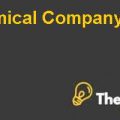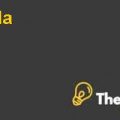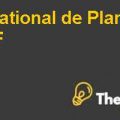
INTRODUCTION
General Motors became the largest automaker in the world within the automobile industry, and became the world’s sales leader in 1931 and since then it is leading the industry. During the year 2001, its sales in units were 8.5 million vehicles and had the market share of around 15.1% worldwide. The GM was founded in the year 1908 and had operations in more than 30 countries, and had sales within 200 countries. In 2000, GM generated $4.4 billion earning from the sales of vehicle of around $184.6 billion. General Motors was trying to determine the risks associated with the currency and this risk was regarding the devaluation of the ARS. To calculate this, the company had to choose from the two options that how it should proceed.
First option is to consider the current hedging policy, which is standard that whether to increase it by putting more investment into it and if so then whethet this investment really creates any worth for the General Motors or not? Second option is that should General Motors rely onto other hedging approaches to mitigate the Argentina currency devaluation risk?
General Motors was involved in dealing different currency and for that GM had been exposed to currency risks for decades. These currency dealings involved buying, selling and financing in currencies other than the GM’s operational currency. To hedge the exposure of the currency with respect to forecasted revenues, costs and investments by committing in foreign currencies, the company used the financial instruments known as derivative. These instruments include currency forward contracts, swaps, and options. These contracts with standard mature in 32 months approximately. General Motors has been exposed to other foreign currency risks that they convert all of the investment output into the currency in which they have been dealing from the inception that is US dollar denomination. For the consolidation purpose, GM has to convert it international operations income into US dollars, which creates the variation between the exchange rates. This fluctuation of exchange rates creates the instability of GM operations that can possibly bring unfavorable results with respect to their financial position. The operating exposure that affects the fluctuations in exchange rates with respect to the expected firm’s value and firm’s future cash flows.
Transaction exposures are increments and declines over profits that occurs when transactions are in need to be settled in a currency, which is not the reporting currency of the General Motors. These exposures come out as results of buying and selling activities in which General Motors was involved. These increments or declines over profits are also known as gains or loss, which are generated from the company’s assets and liabilities.
ANALYSIS
The analysis is made keeping the following points in consideration and to come up with the proposed solution by using these key points.
- To minimize the risks associated with the cash flows and earnings
- To minimize the cost incurred for managing the exchange rates and the time to manage it
- To get the benefit by aligning this exchange dealing with company’s core operations
General Motors currently had the passive strategy for hedging of their risks exposure and it had been in direct correlation with the policy they had. This policy was focused on the business operation for manufacturing and selling automobiles. In addition, the company did not focuse on the theoretical movements of the exchange rates. This made the General Motors to provide the individual regional treasury department the guideline to follow the designated functions. The detailed analysis is based on these objectives.
GENERAL MOTOR’S STRATEGY TO HEDGE
a) To minimize the risks associated with the cash flows and in earnings
With respect to minimize the risks associated with the cash flows and earnings, General Motors’ treasury management is working hard to manage the transactions so as to hedge the risks exposure that every transaction has under the exchange rate risks. The management was ignoring the other risks related to these transactions by focusing only on the hedging. For this purpose, they were assuming that by ignoring all other risk factors they could reduce the amount lost by exchange rates variations.
b) To minimize the cost incurred for managing the exchange rates and also the time to mange it
The management that was responsible to manage the exchange rate risk was making effective policies but these policies were made after consuming lots of time, which were very important. The passive strategy employed by the General Motors was because of the time management and the company was putting efforts for reducing the time as well as cost by adopting this passive strategy for the foreign exchange rates fluctuations. For this purpose, the company conducted the internal analysis, which determined that investments placed into the foreign exchange through resources are not out-performing the results of previous year’s results after adopting the passive strategy.....................
This is just a sample partial case solution. Please place the order on the website to order your own originally done case solution.













